Your search for the best, quick vegetable broth is over! This 60-minute veggie-packed vegetable broth can be made 2 ways — using kitchen scraps or with fresh vegetables — your choice! Prepared stovetop, this veggie broth recipe is simple and quick to make with well-tested tips for maximum flavor.
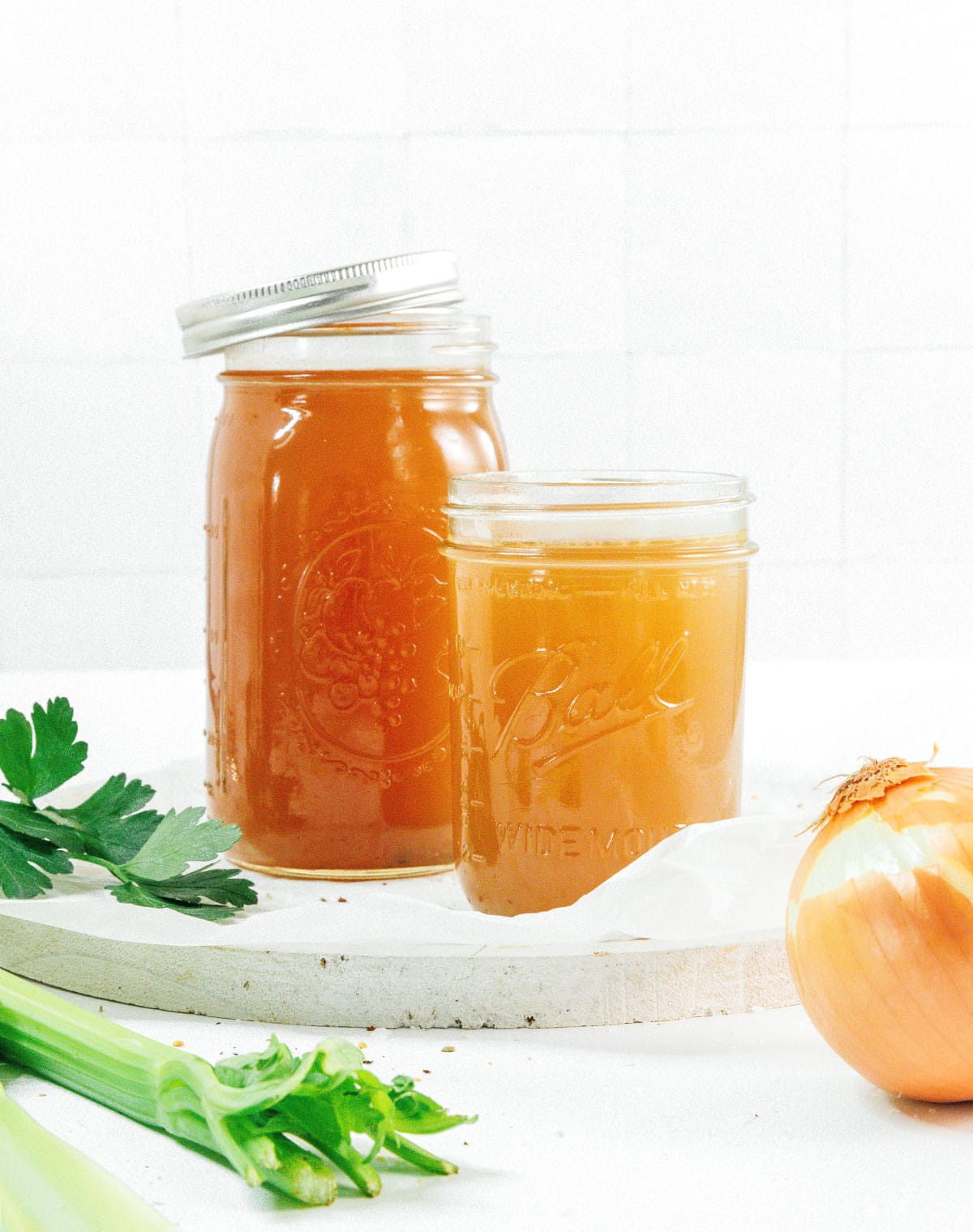
Reader rating
“I made this using veggie scraps. It turned out great! I’m so glad I won’t have to use the commercial stuff anymore. Thanks for another great recipe Sarah.” —Nancy
As a nutritionist / vegetarian food blogger, I cook with many vegetables, which inevitably means having scraps I feel too guilty to throw out. What better way to use them than to make a vegetable broth that I can use for so many other things?
In just a little over an hour, you can have the perfect vegetable stock for soup, gravy, stuffing, risotto…the list goes on. I love that you can customize it to whatever you have on hand, or whatever dietary restrictions you might have (like making it a low sodium vegetable broth!)
Speaking of customization, I’m showing you how to make this veggie broth two ways: from vegetable scraps or with fresh vegetables.
Option 1: Vegetable broth from scraps
Using scraps is my preferred way of making veggie broth. As I’m cooking everyday, I put scraps in a freezer bag and once it’s full, I make the homemade vegetable stock! I love knowing that I’m reducing food waste and not buying extra ingredients. It’s also nice knowing I’ll have a vegetarian vegetable broth on hand for my next project!

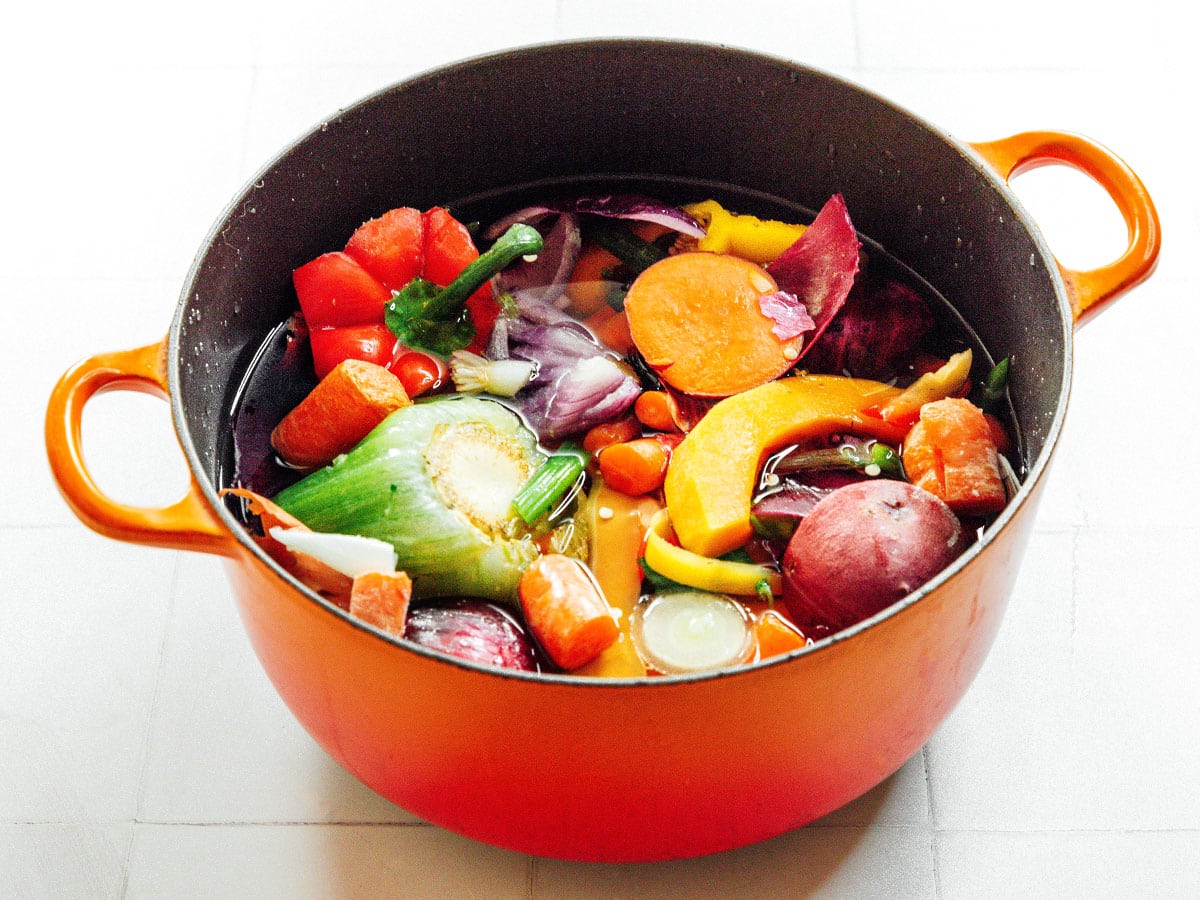
Option 2: Vegetable broth from Fresh Veggies
Sometimes, you need DIY vegetable broth available to you at a moment’s notice, and it’s easier to buy fresh vegetables to make it. This way of making it is just as easy and will yield delicious results.
A big benefit of making your broth with fresh vegetables is that it’s foolproof. Some vegetables aren’t great in broth and can make it bitter. Making it with fresh vegetables ensures that you don’t accidentally sneak bad ones in that will make it taste less than ideal.
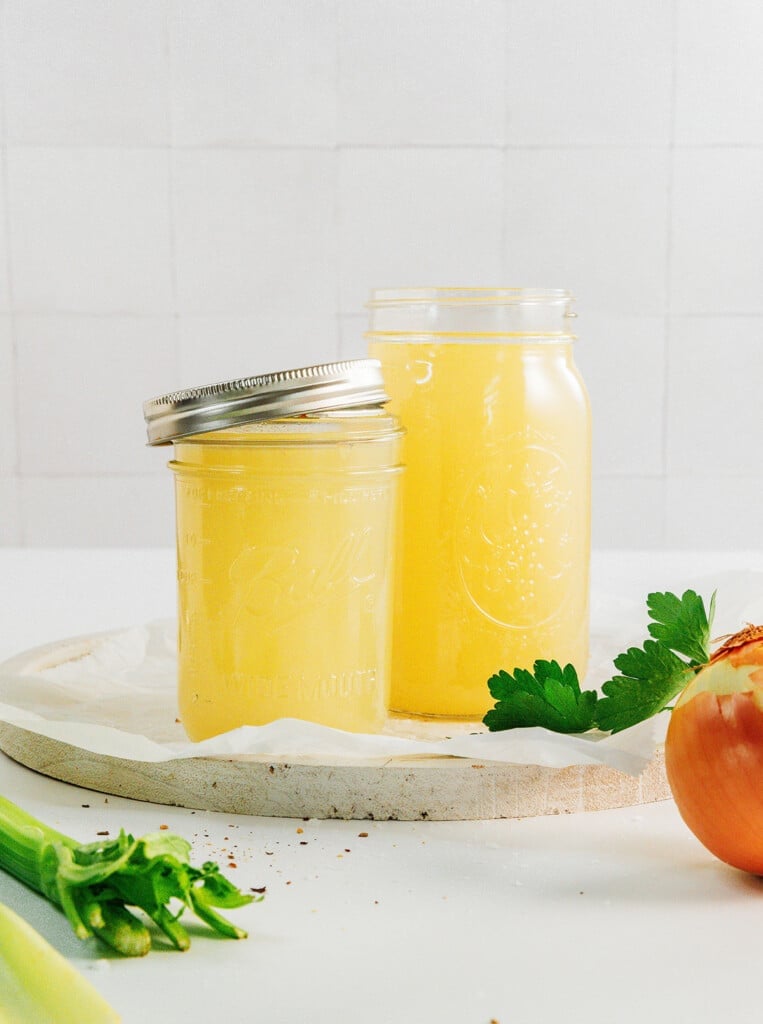
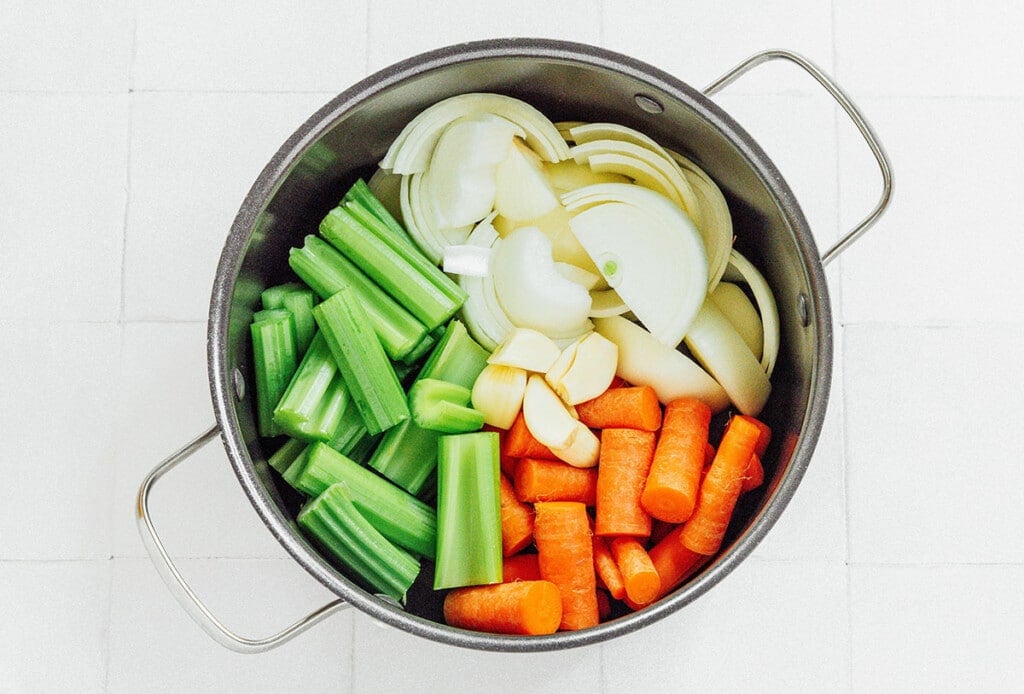
Ingredients for Homemade Vegetable Broth
Vegetable broth, at its essence, is vegetable water. You’re basically soaking/cooking veggies in water for long enough that the water absorbs the flavors of the vegetables and you’re left with a delicious broth in the end.
Both fresh vegetables and scraps have their benefits. The fresh vegetable option is still extremely budget-friendly with plenty of options for variation. You can add your favorite herbs, some tomato paste, and salt and pepper to your liking to both options. You don’t even have to leave the vegetable section when you’re grocery shopping!
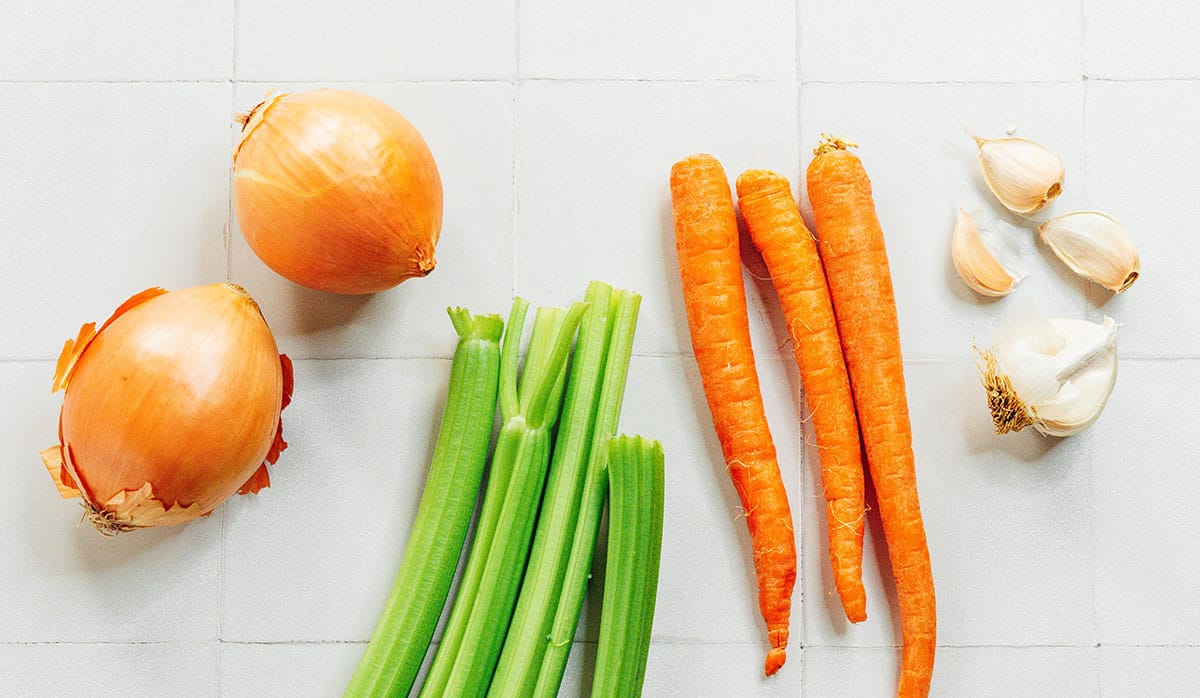
Ingredients for fresh vegetable broth
- Onions – these add so much flavor to your broth, they’re affordable, and any type of onion will work! You might even have some extras lying around that you didn’t need in another recipe. Make sure to peel and chop before incorporating.
- Celery – also an inexpensive vegetable, chopping up celery and letting it soak into your broth brings a fresh, bright taste to your finished product.
- Carrots – you can either leave the skins on after scrubbing your carrots down or peel them, whatever your preference.
- Garlic – can you ever have enough garlic? Peel your cloves and toss them in whole.
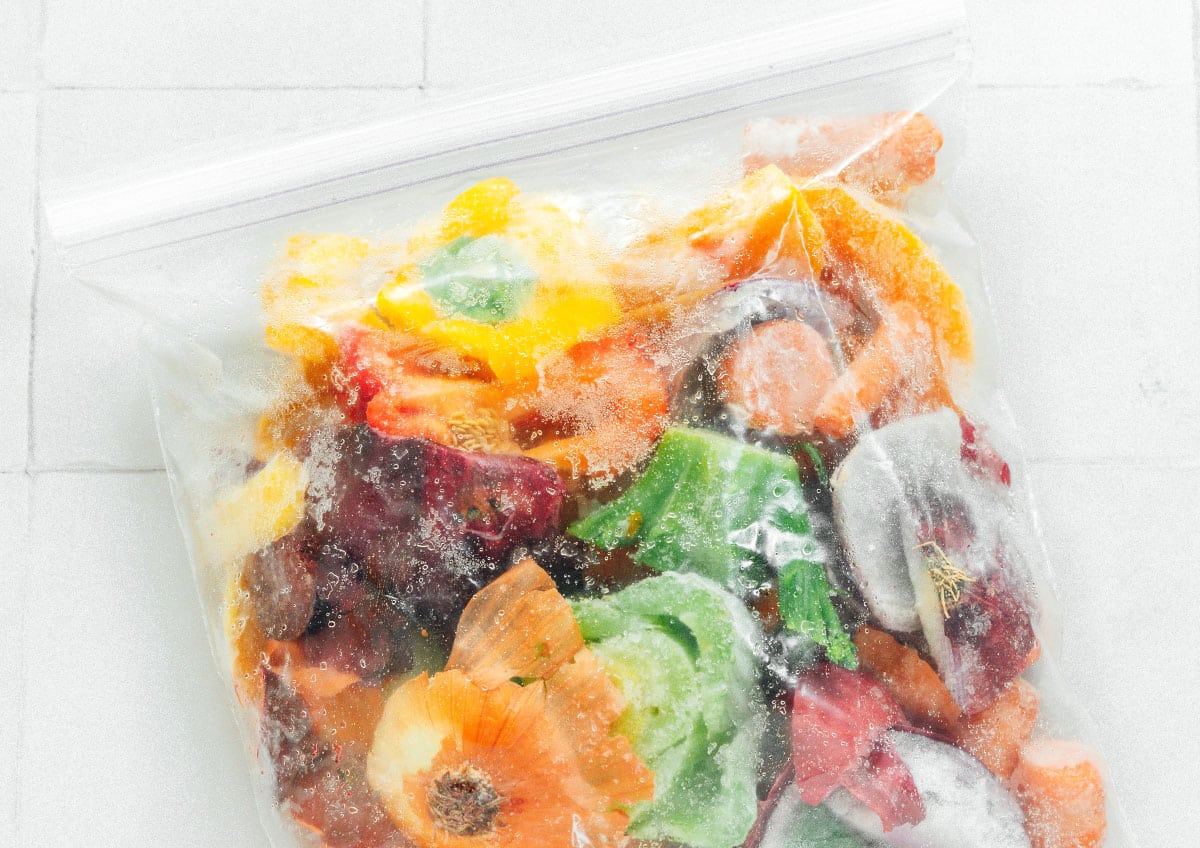
Ingredients for broth Using Scraps
Vegetables and scraps that work well for making broth include:
- Broccoli stems
- Bell pepper scraps
- Potatoes and skins
- Herb remnants
- Spent corn cobs
- Leeks
Some veggies don’t work in broth as they’ll make it bitter. Excess florets, most leaves and stems, and onion skins should be avoided. The majority of veggies will mix in perfectly and have you enjoying homemade vegetable stock in no time. Watch out for:
- Onion papers
- Garlic paper
- Celery leaves
- Too much broccoli or cauliflower
- Woody herb stems
How to make Vegetable Broth
The easy preparation process will be the labor-intensive part. After that, you’re just admiring from afar and letting the magic happen in the pot!
Step 1: Saute (optional)
If you want a more intense flavor in your broth, you’re going to saute your prepared veggies in a large pot with some olive oil before boiling. This will soften the veggies and allow more flavor to seep into the water as it cooks in future steps.
Cook in the olive oil for about 10 minutes or until warm and fragrant. After all, I’ll always believe that the smell of sautéed onions and garlic is the best possible smell in the kitchen!
Step 2: Boil
Add 10 cups of cold water to your veggies in the large pot, or enough water to cover the veggies. If you’re adding tomato paste, herbs, salt and pepper, or any other spices, this is the time.
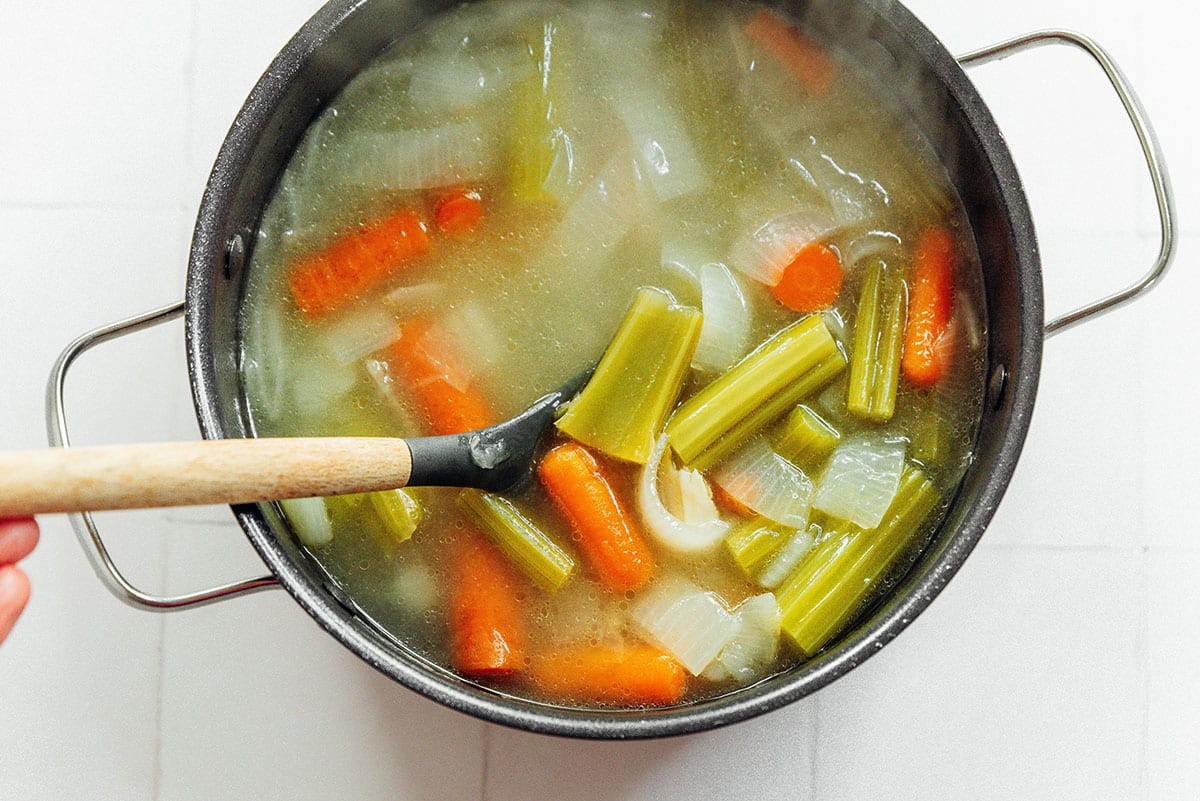
Then, cover with a lid and bring to a gentle boil. Let it boil for 45-60 minutes. When your time is up, place a big bowl under a large strainer and strain your broth into the bowl. Definitely don’t forget the bowl underneath the strainer.. that would be tragic.
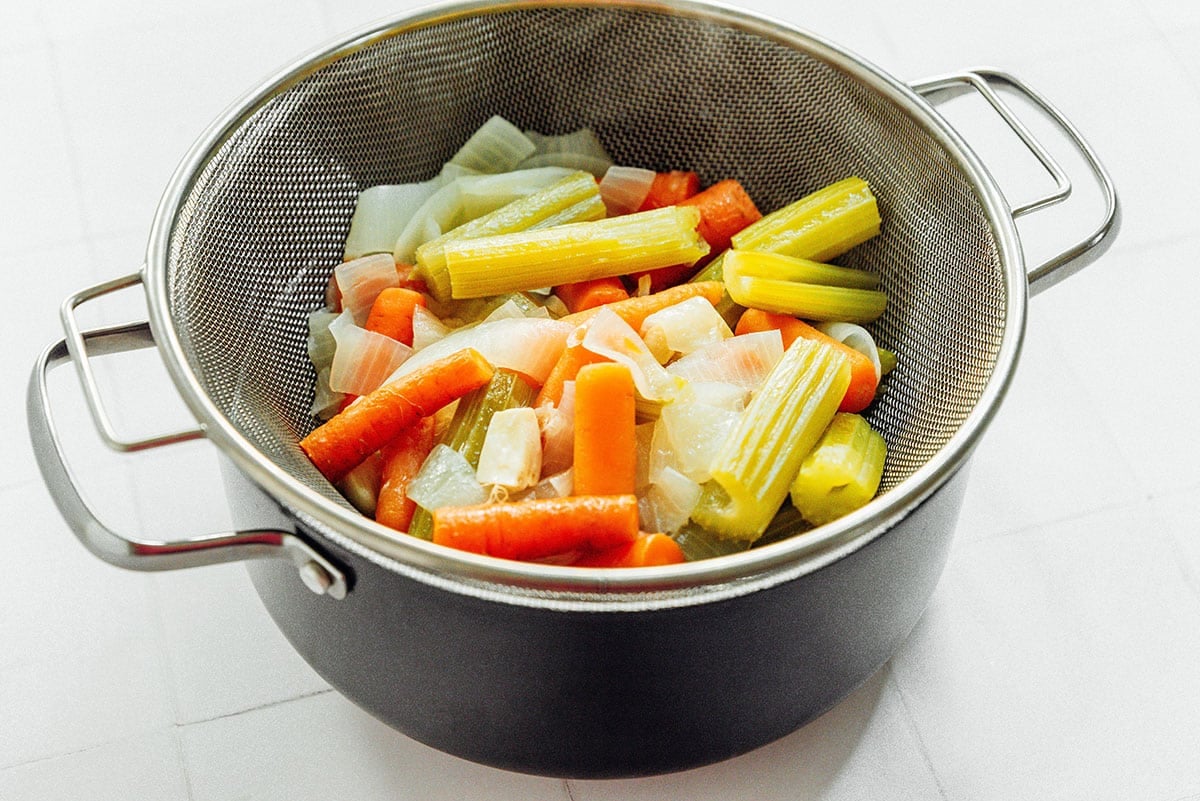
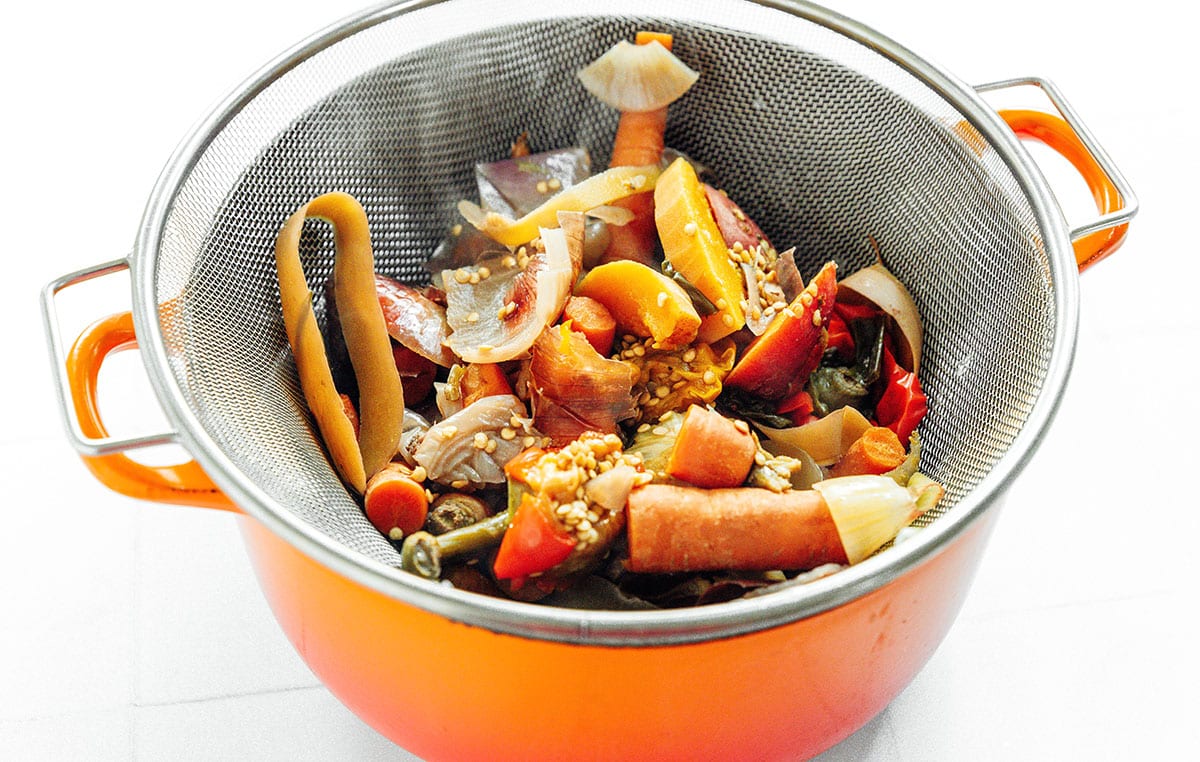
Step 3: Cool
At this point, you can add a dash of salt if you’d like to make the flavors a little stronger. Let your broth sit on the counter and cool completely before separating it into glass jars with airtight lids. Store it in the fridge until ready to use!
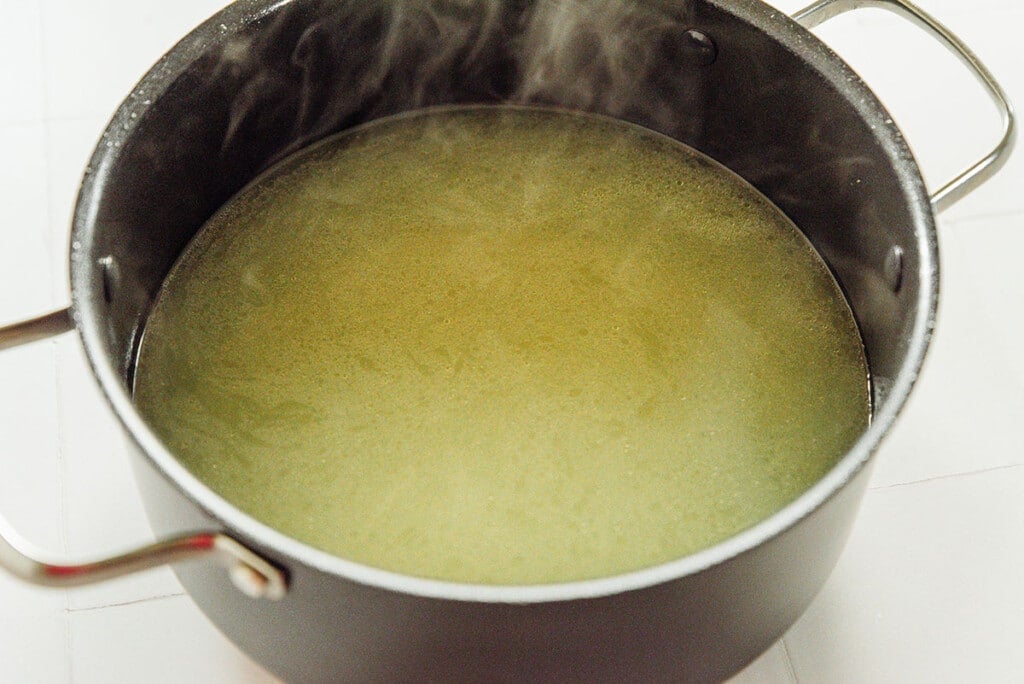
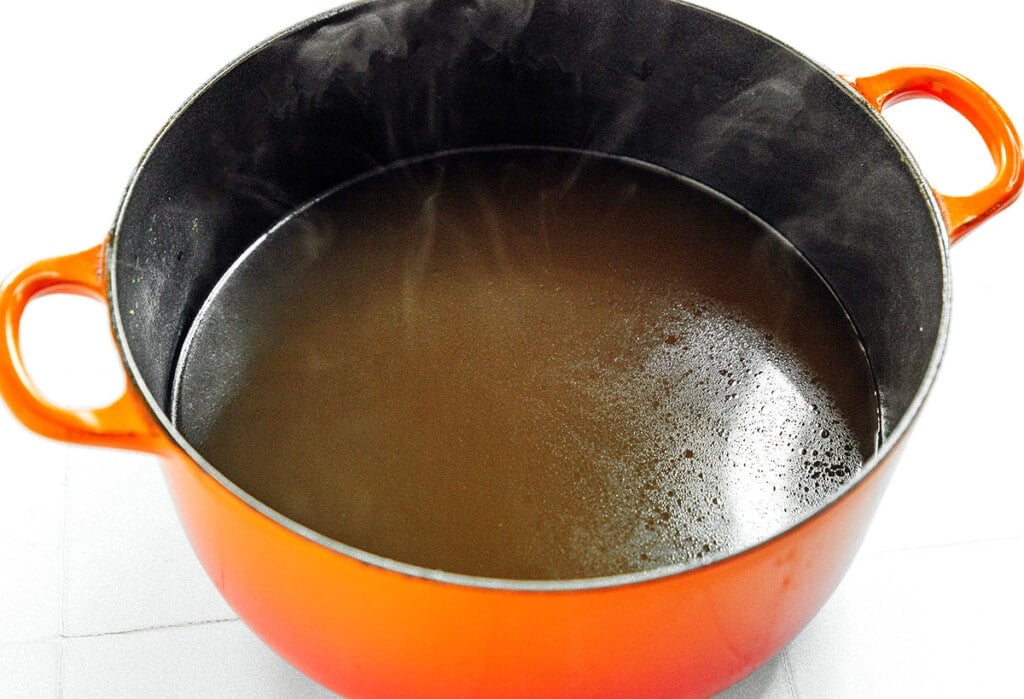
Recipe tips
Taste your broth as you go to see how the flavors are doing, if it needs more time, more salt, etc. This is the best way to ensure you get the final product you want!
Why this Recipe Works
- Reducing food waste becomes much easier when you have a plan for your scraps.
- It’s a cheaper alternative, even if you’re using fresh vegetables. It’ll make more product for your money and broth/stock options are the store can get expensive. Plus, you won’t have to lug it home in your grocery bags.
- Your pantry space will be freed up while your broth is stored in the fridge! I know that’s definitely a benefit for me.
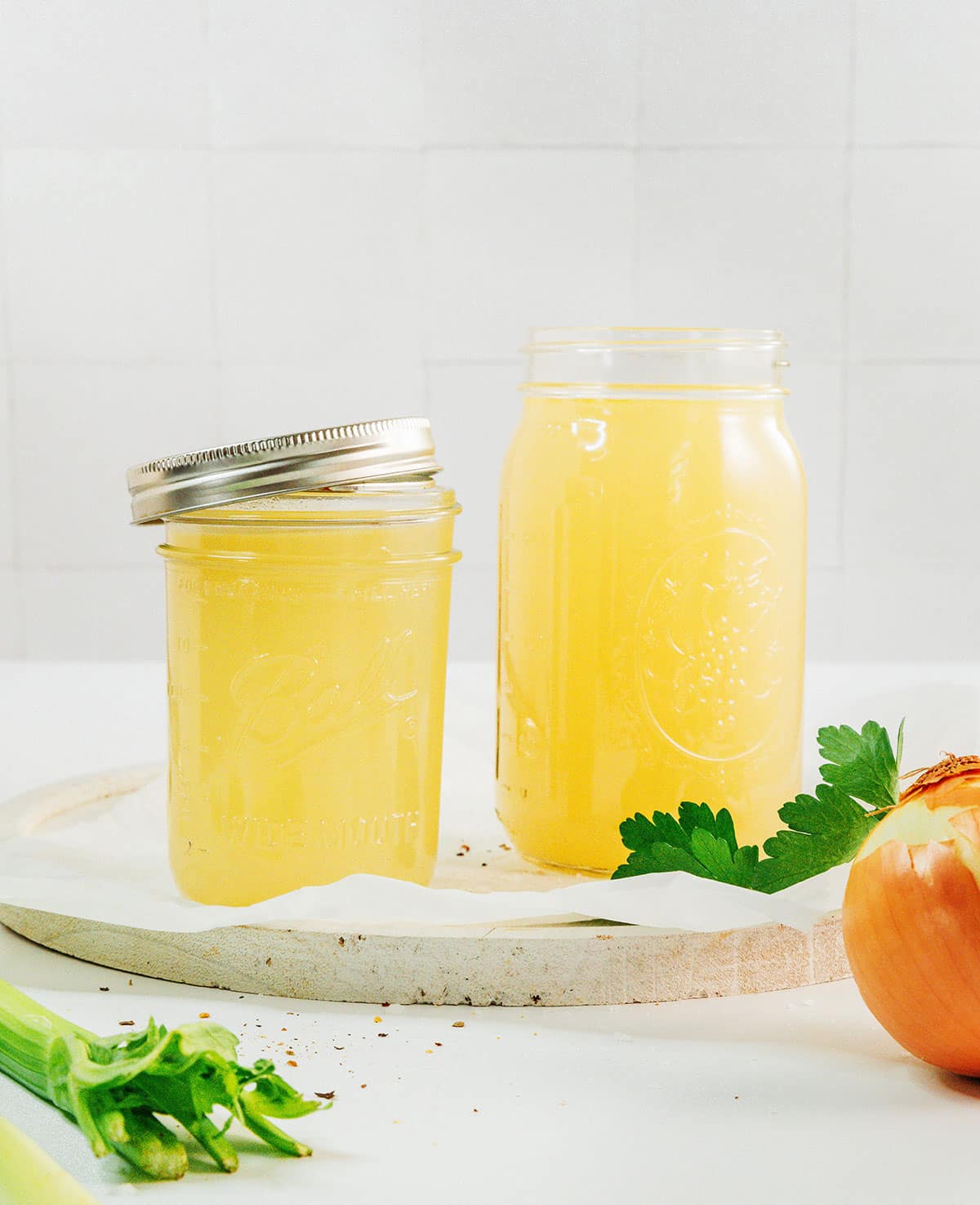
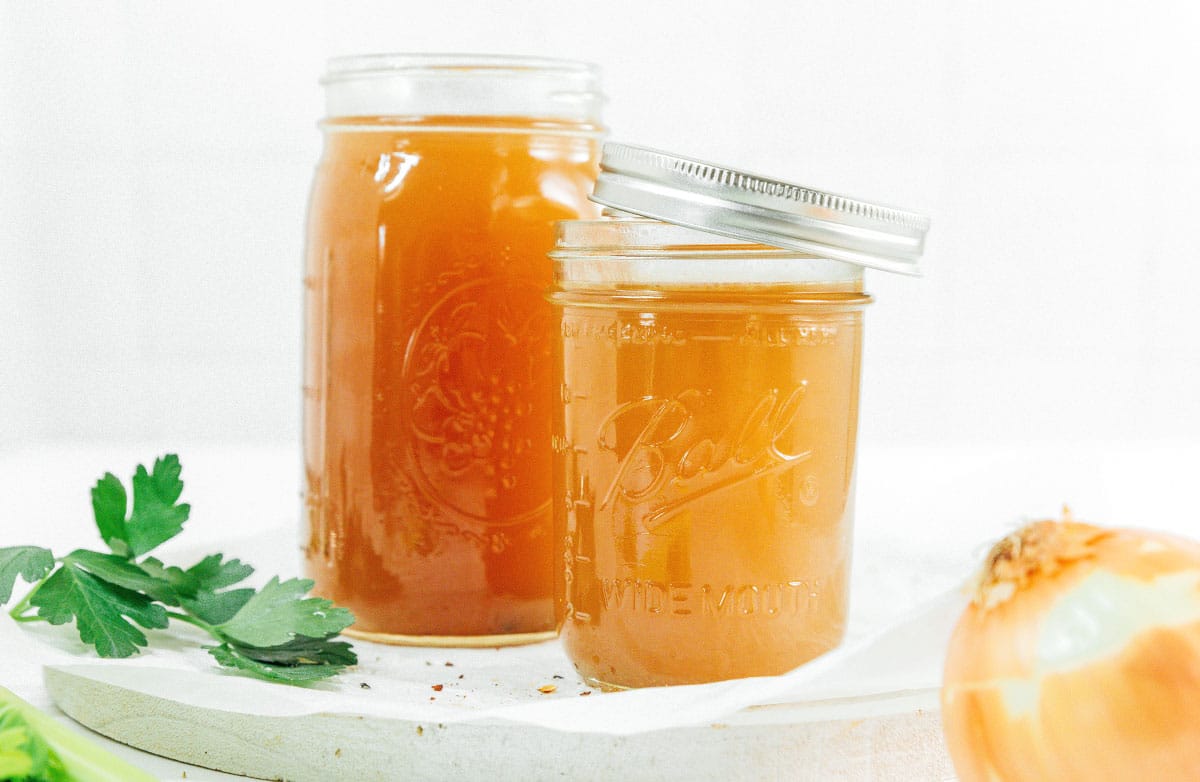
FAQs
Cold water allows vegetables to come up to temperature at a slower pace, giving them time to release more of those yummy flavors we’re looking for.
In general, stock is usually made from bones while broth is made from flesh. Both will use vegetables to support the flavor. In our case, the main difference is that a broth generally has more seasonings like salt and pepper.
Homemade vegetable broth has a number of health benefits. In addition to being low calorie and low sodium, it’s packed with vitamins and minerals from the veggies!
What to use this recipe in
Vegetable broth is so versatile – the uses for your homemade broth are practically endless. Here are some of my favorites!
- Stuffing with vegetable broth base
- Mushroom risotto recipe with veggie broth
- Quinoa veggie soup with vegetable broth
Did you make this recipe? Be sure to leave a review below and tag me @liveeatlearn on Facebook or Instagram!
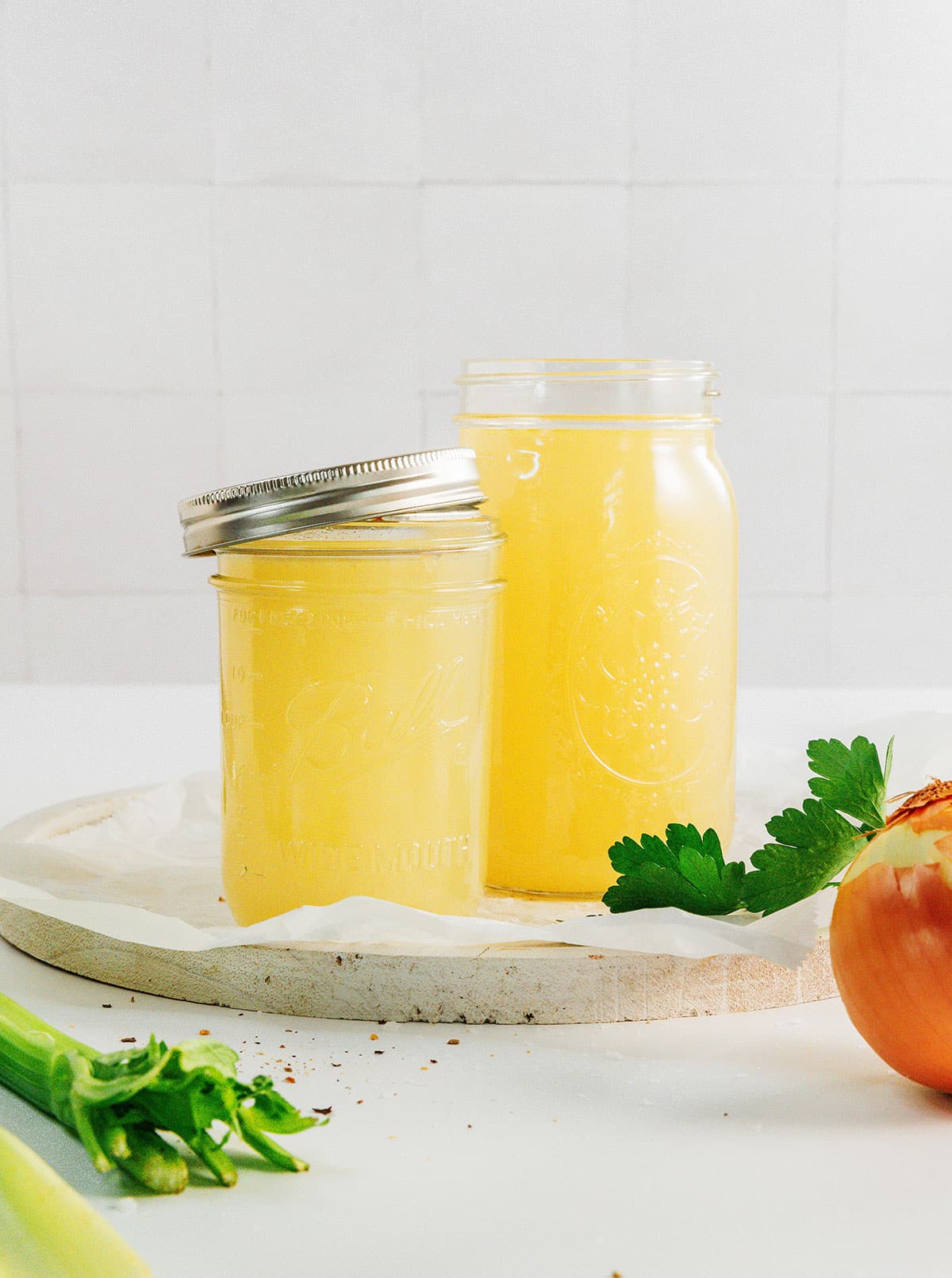
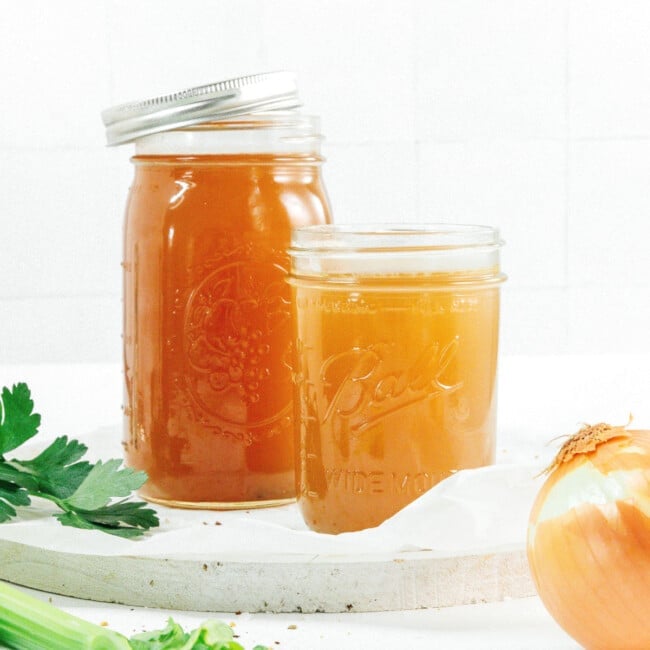
Ingredients
Broth With Fresh Vegetables
- 2 onions white or yellow, peeled and roughly chopped
- 5 ribs celery chopped
- 5 large carrots chopped
- 6 cloves garlic peeled
Broth With Kitchen Scraps
- Best Vegetables For Broth mushrooms and stems, potatoes and skins, herb remnants, bell pepper scraps, corn and/or spent cobs, summer squash and skins, winter squash and skins, leeks,
- Avoid These* onion skins, too much broccoli or cauliflower, woody herb stems, celery leaves
Optional Flavor Enhancers
- tomato paste
- hardy herbs
- salt
Instructions
- Saute (Optional): To intensify flavors, optionally heat a splash of oil in a large pot and add your chosen veggies. Saute until warm and fragrant, about 10 minutes.
- Boil: Add 10 cups of cold water, or enough to cover the veggies. Optionally add a spoonful of tomato paste or hardy herbs. Cover with a lid and bring to a gentle boil for 45 to 60 minutes.
- Strain: Place a large bowl under a strainer and strain the veggies from the broth.
- Cool: Optionally add a dash of salt to intensify the flavors. Let cool before portioning into glass jars. Store in the fridge until ready to enjoy.
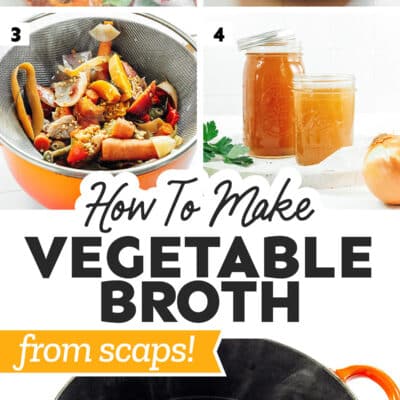
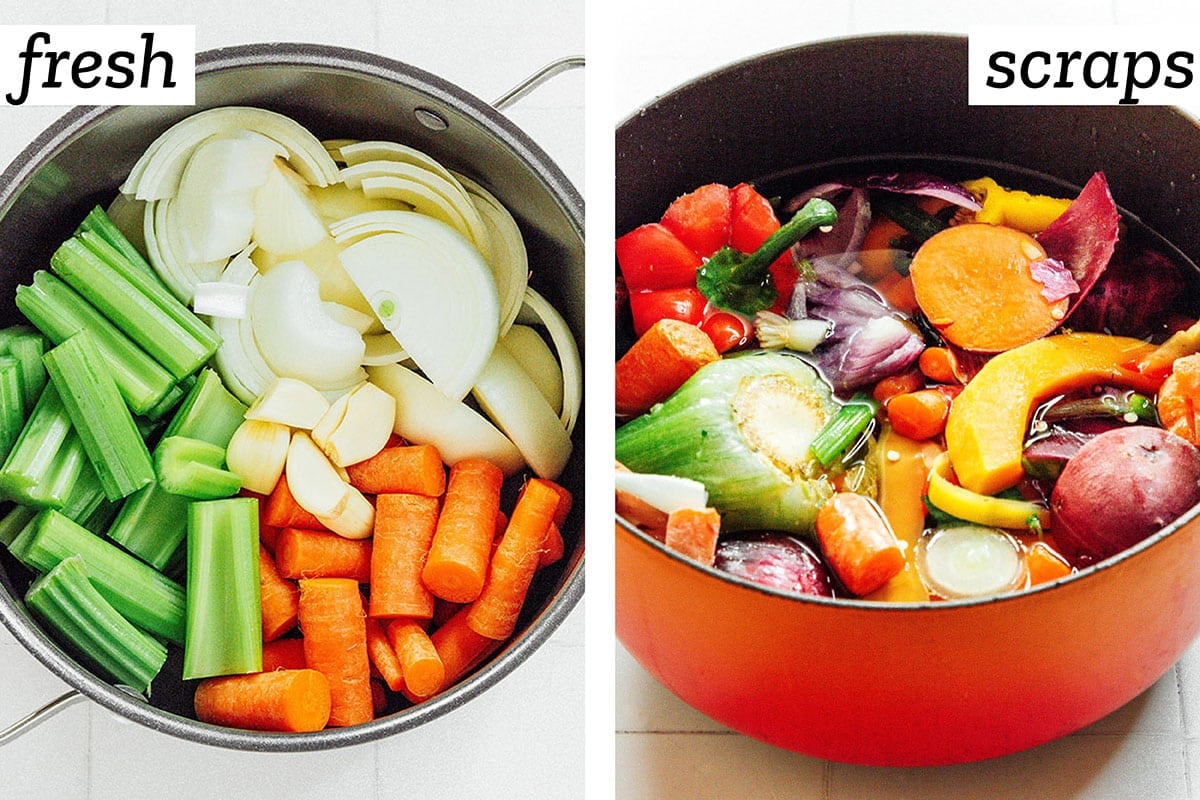
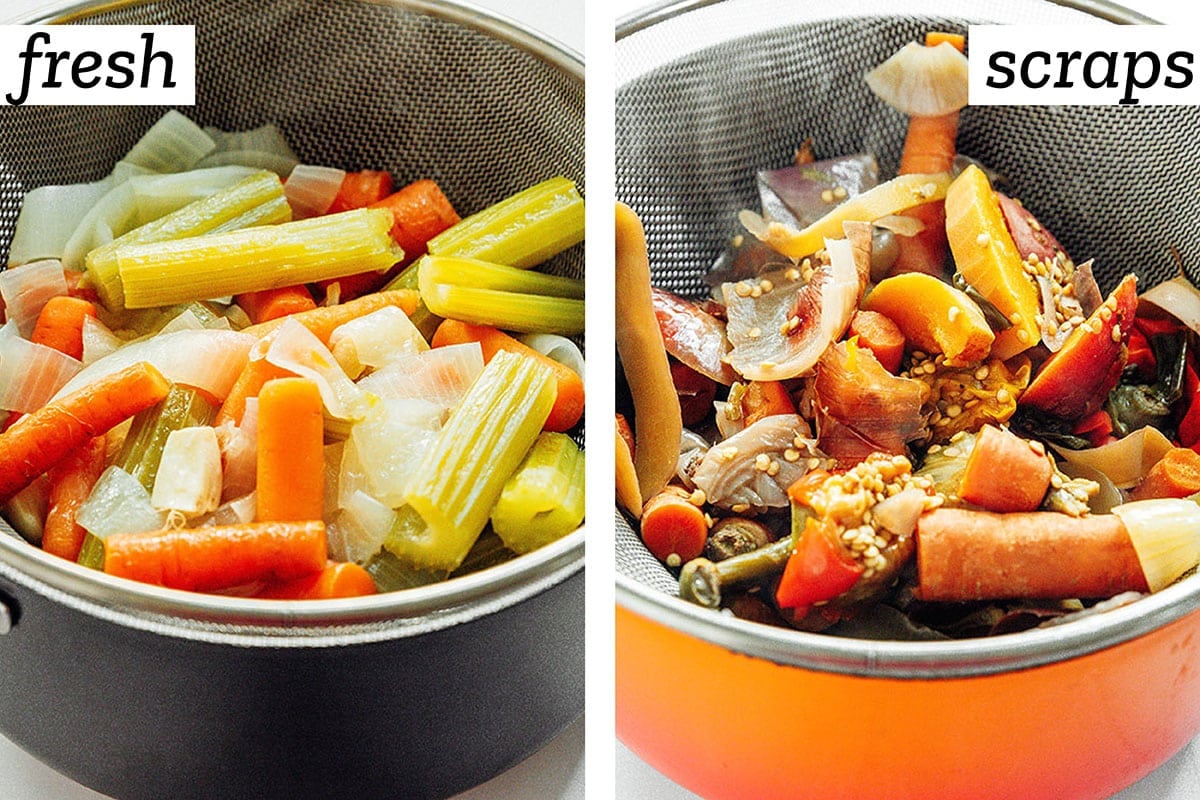
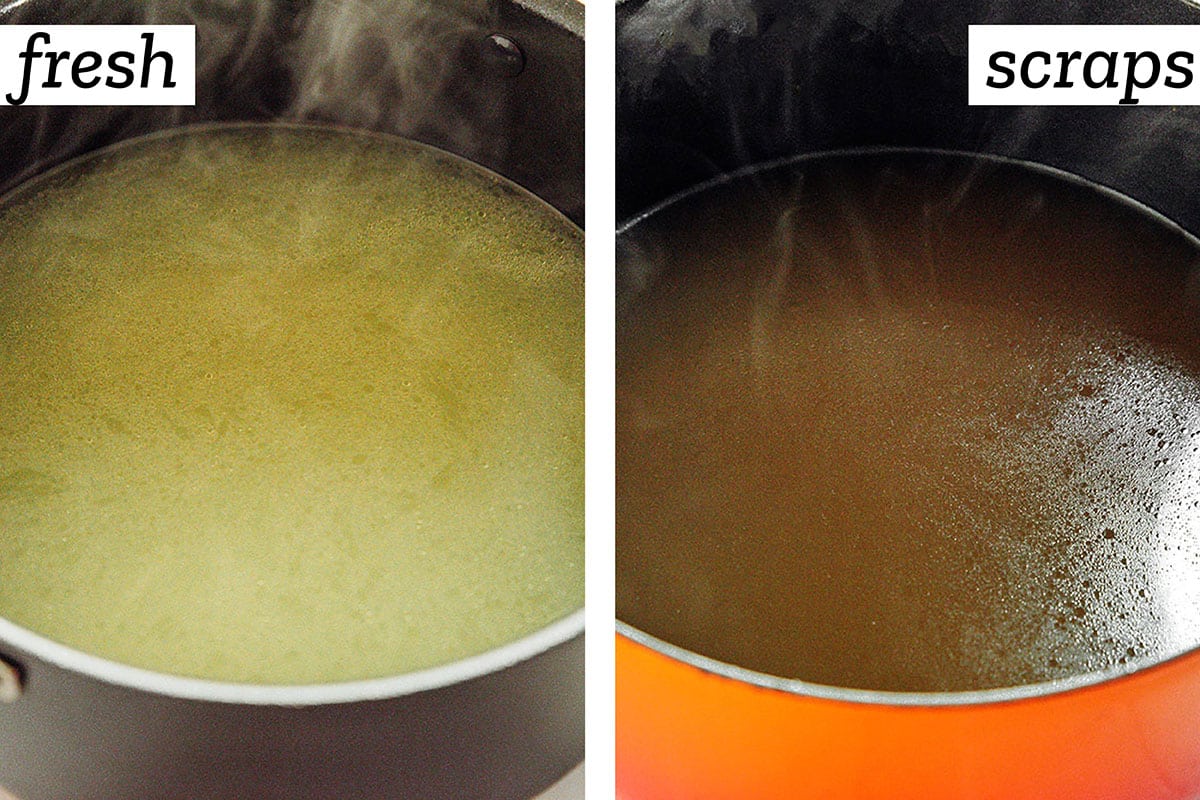
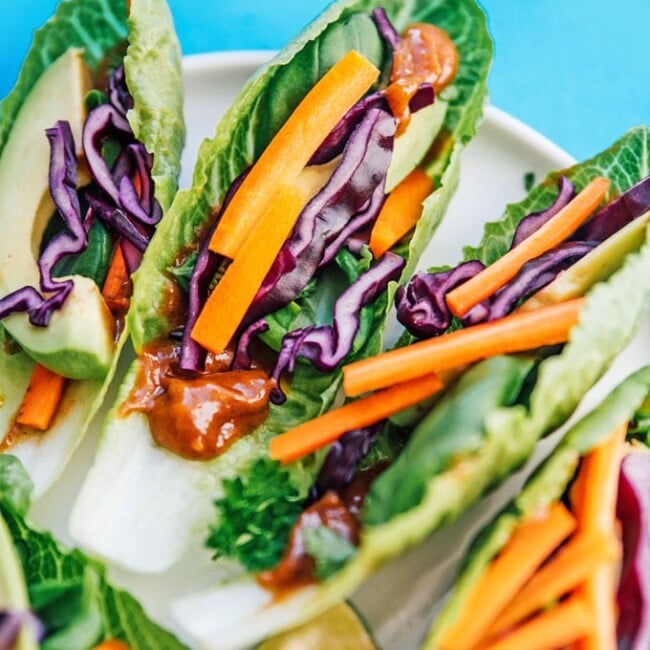
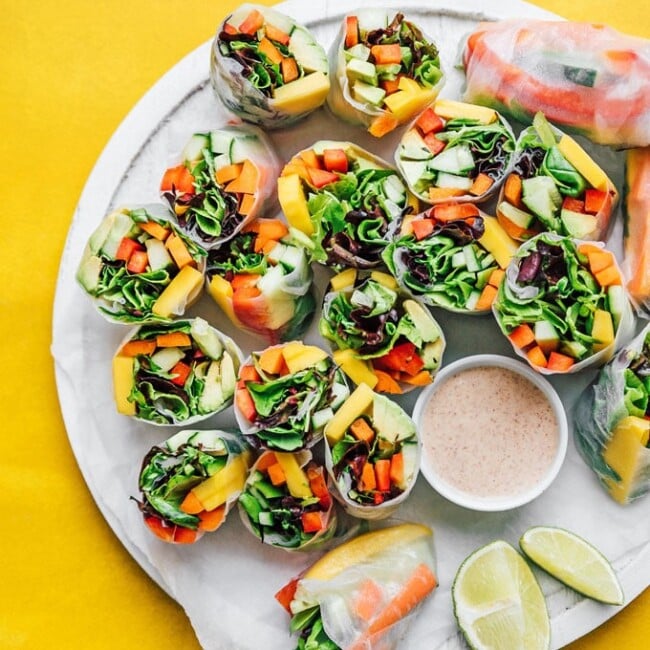
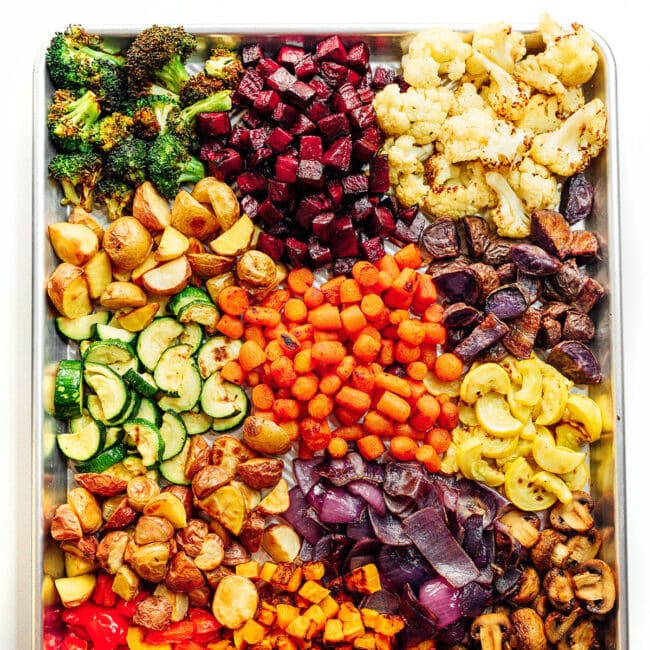
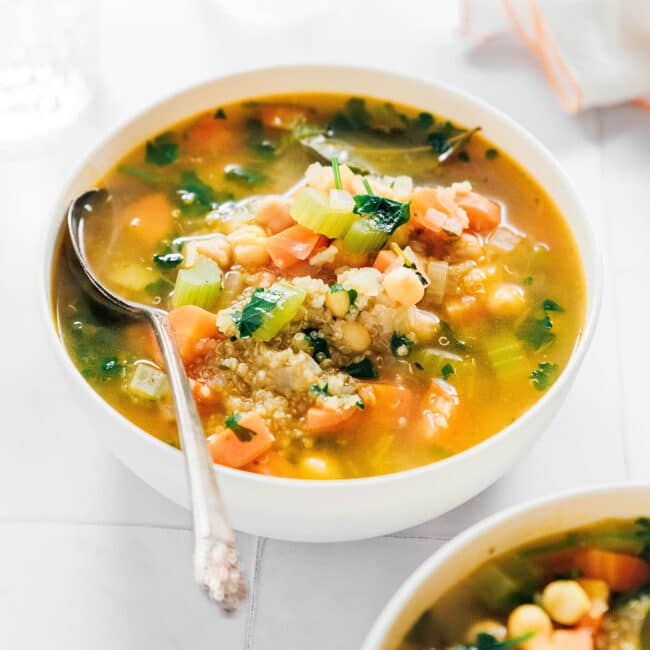
Gw says
That is such a good idea. I mean, have you seen the price of produce lately. Thanks.
Pamela Joy says
I’ve been making my own veggie scrap broth for years. I also add a bit of ACV, a sheet of kombu, and a tbsp of miso to my pot.
Thanks for the tip about using cold water. I always fill the pot with hot tap water. But now I will use cold instead.
Carol says
I’ve been making broth for years from the scraps of most vegetables. I’m not vegetarian so I’ll also freeze any bones n meat scraps that I’ve got to add to the boil. I’ve always included onion and garlic skins, but have not noticed any bitterness. Freezing the broth in various size glass containers keeps it convenient for me. PLZ, remember to leave an inch space on top before freezing!! Container will break in freezer, if that step isn’t followed. I’m trying not only to reduce food waste, but also give up plastics. (Ufta! That’s a work in process!) Vegetable broth is sooo easy: freeze up, boil up, strain out, use up. Done. I hope many of your followers give it a go! Thanks for your healthy guidance n nudges, Sarah.
Carla Harris says
Is the stove top cooking method better than cooking it in an Instant Pot? If so Why?
Sarah Bond says
Either would work well!
Nancy D. says
I made this using veggie scraps. It turned out great! I’m so glad I won’t have to use the commercial stuff anymore. Thanks for another great recipe Sarah.
Sarah Bond says
I’m so happy to hear it, Nancy! Enjoy! 😀
Jenny says
Super easy, quick and delicious
Bernie bosnyak says
What do you do with the veg once you’ve strained the broth? Seems a waste to throw it away. Obvs scraps can be binned, but the fresh veg?
Sarah Bond says
Most of the flavor will have been steeped out into the broth, but you could always make another (less potent) batch! Otherwise, it’s mostly just fibrous scrap. Compost! 🙂
Emily Deiter says
How long does this keep in the fridge for?
Sarah Bond says
About 5 days 🙂
Scrappy says
Aha a nutritionist and a chef. Perfect! After using fresh ingredients for broth, why not purée the cooked vegetables and add them back to the broth? The mixture makes a great gravy and soup base.
Sarah Bond says
You certainly could! It will just create a thicker end result, more like a pureed soup.